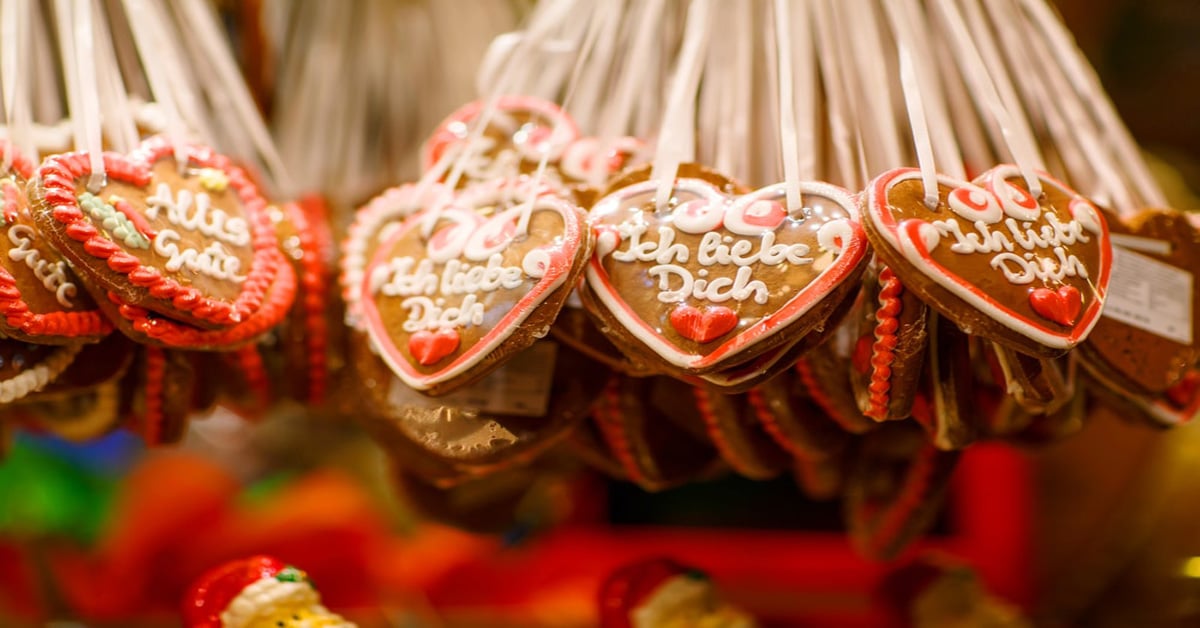German Candy – Most Popular Treats You Should Try Today
Popular German candy often fascinates people from all over the world. The reason is that some of the most delicious and high-quality candy and chocolates originated in Germany. Do you wonder what type of chocolate, desserts, and candy come from Germany? In fact, this country has a long history of making special treats that are made with special, very high-quality ingredients. As a result, German candy has become very popular around the world.
Interestingly, some of the most special German candy are available during the holiday season. For instance, German people usually enjoy tasting Easter candy and using them for fun egg hunts. Besides, people from this country adore Christmas candy and as the Christmas season approaches, they take part in the tradition of placing it under the Christmas tree. However, there are plenty of German candy that people produce and eat throughout the entire year too.
Please leave a review or any memories of this snack in the comments at the bottom of this page. Thank you!
Besides candy, Germany is also very famous for inventing some of the confectionary items like Marzipan, and, of course, Gummy Bears or Gummi Bears, as people often call them. These candies are available around the world today, but only a few people know that they are originally from Germany.
German Candy Names
- Milka
- Ritter Sport
- Duplo
- Leibniz
- Toffifee
- Hanuta
- Trolli
- Knoppers
- Riesen
- Balisto
- Haribo Gold Bears
- Marzipan (Mozartkugel)
- Lindt Chocolate Bunny
- Chocolate Santa
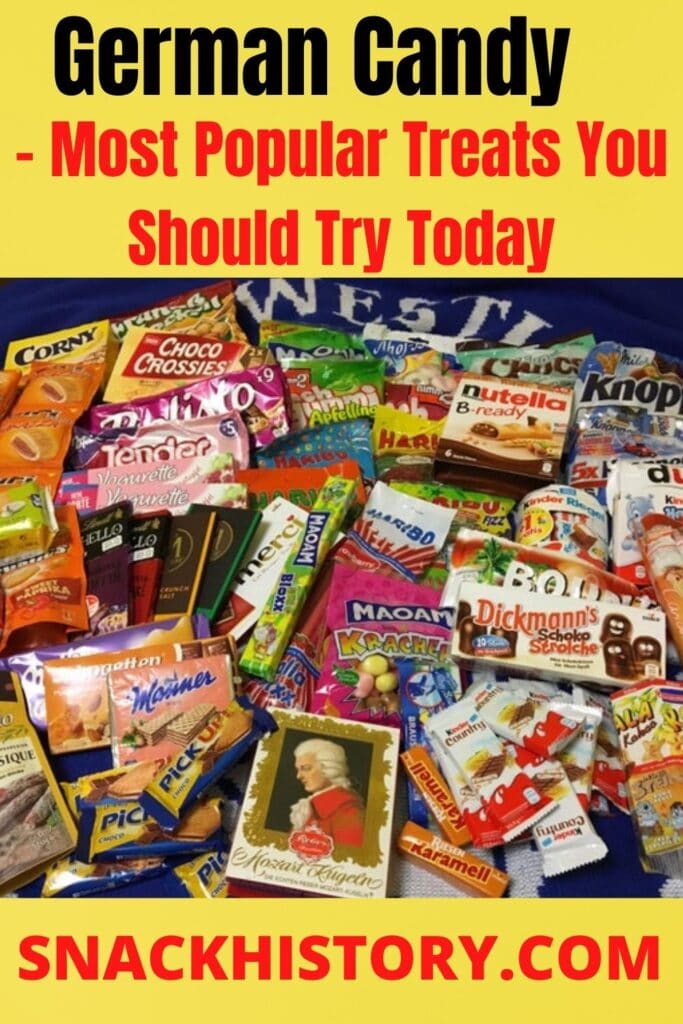
The List of Most Popular German Candy
Germany has been known for making high-quality candy, as well as exquisite flavors and textures. German candy is among the most popular candies in the world, and people enjoy it in more than one hundred countries. However, German people also enjoy tasting candies that tend to be popular internationally.
Creating fun and delicious flavors, as well as being innovative in candy making, has led to great success throughout the world. Here are the top ten popular German candy that you must try.
1. Milka
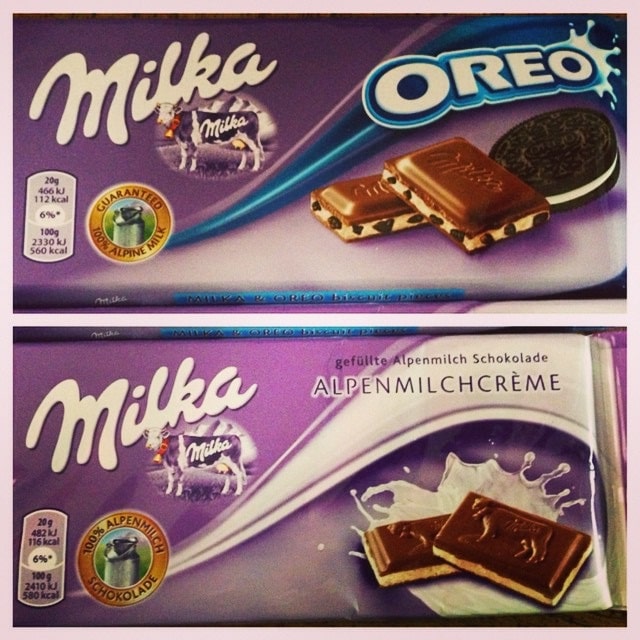
If you go to the supermarket and lilac-colored packaging is shining from the shelves, there is no doubt that you are looking at one of the Milka chocolates. Originally based in Switzerland in 1901, Milka has been primarily produced in Germany for more than 100 years.
Even though Milka chocolate bars are the most popular, they offer cookies and biscuits as well. The brand name comes from two main ingredients in this German candy: “Milch” (milk) and “Kakao” (cocoa).
Have you seen a purple cow named Lila? If so, then you know that it has been a face for Milka advertising for a very long time.
2. Ritter Sport
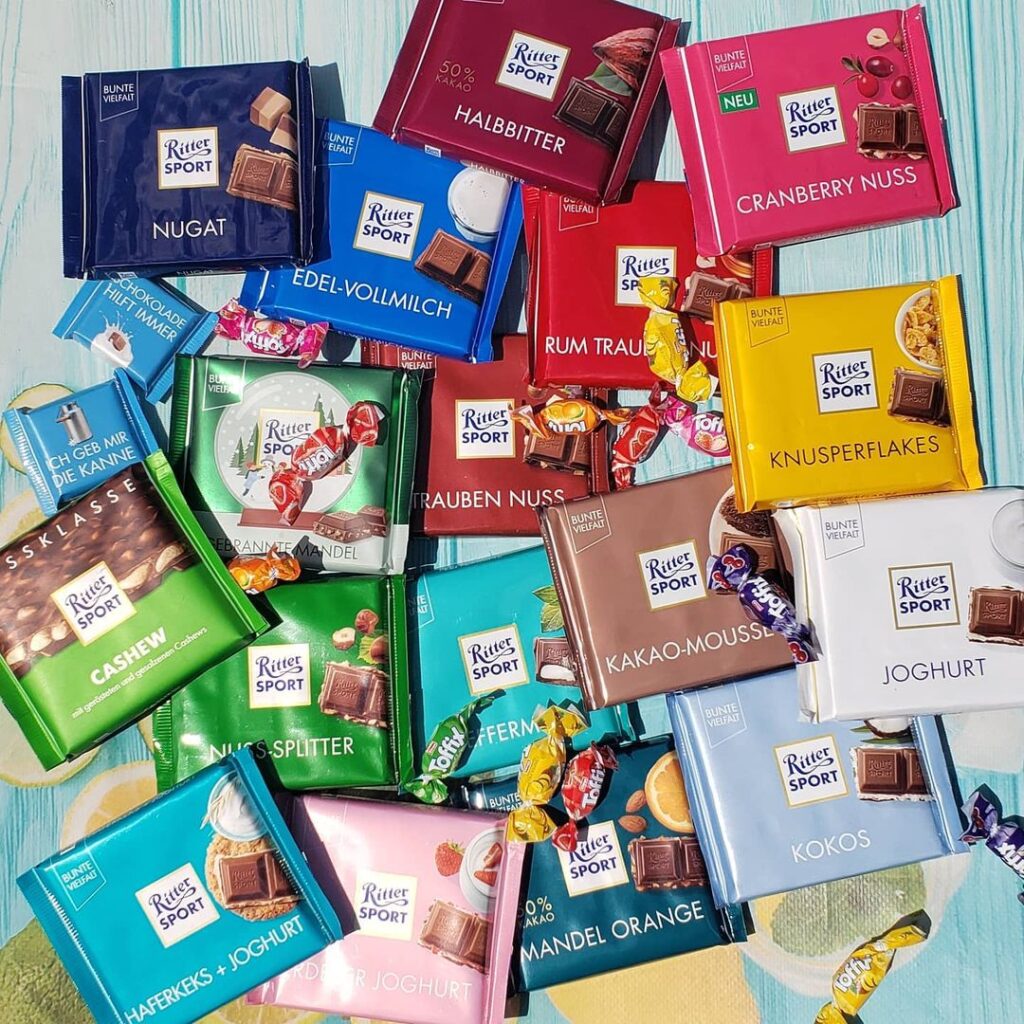
Initially named “Alrika,” Ritter Sport is now one of the most famous German candy that you can try. It was created in 1912, by Alfred Ritter and his wife, Clara. The Ritter Sport chocolate factory was first located in Stuttgart-Bad Cannstatt. Later, it moved to Waldenbuch, where it is still located today.
Ritter Sport as you know today was first launched in 1932 when Alfred’s wife suggested creating chocolate bar squares that would fit in every sports jacket pocket. The slogan of this German candy says that Ritter Sport is “Quadratisch, Praktisch, Gut” (Square, Practical, Good).
Today, there are various Ritter Sport squares with different fillings, like hazelnuts, praline, marzipan, etc. Which one is your favorite?
3. Duplo
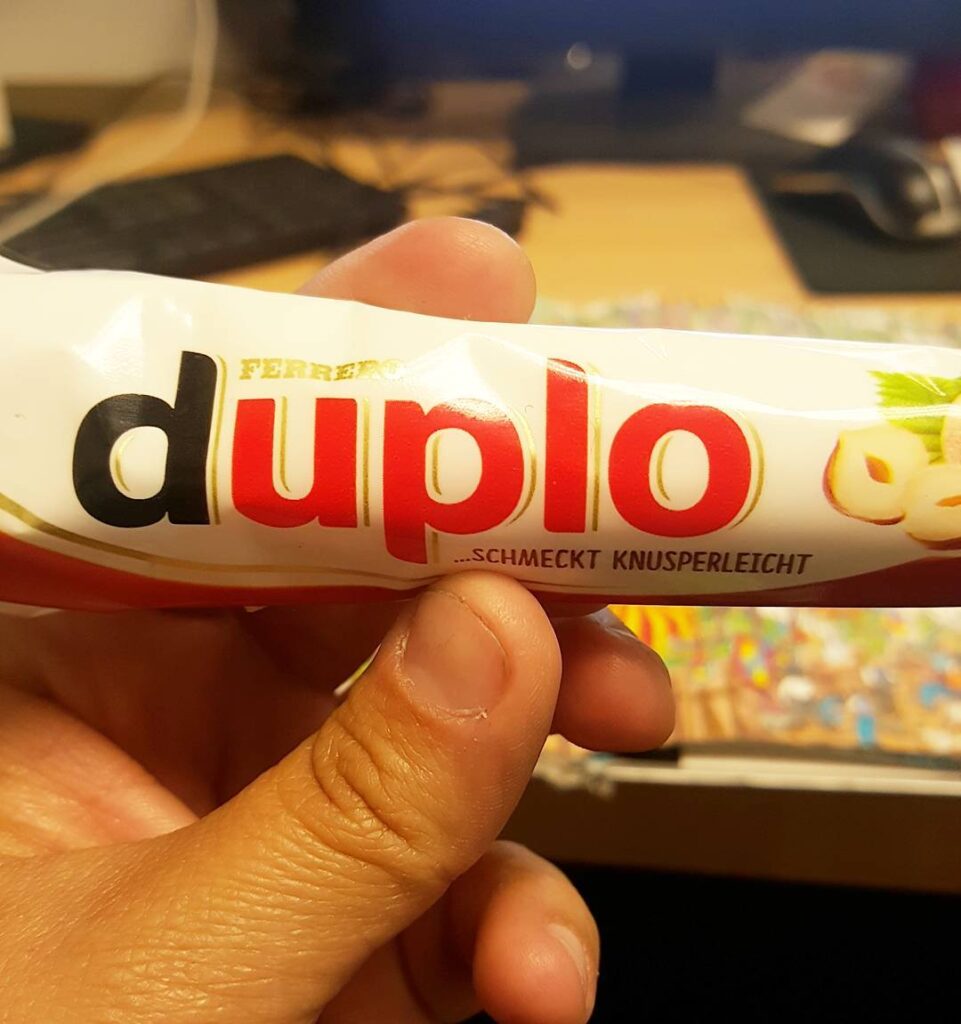
Duplo is a chocolate candy bar, created by the Italian company Ferrero, which is also famous for making Butterfinger, Baby Ruth, Crunch Bar, and many more. Duplo was first launched in Germany in 1964. The name of this German candy comes from the Latin word “duplex” or “duplus,” which means double. Maybe one Duplo is never enough.
Who would say no to this delicious German candy bar, which consists of several layers of thin wafers with nougat cream coated in milk chocolate? Duplo has been one of the best-selling German candies since 1964. It is sometimes referred to as the longest praline in the world.
4. Leibniz
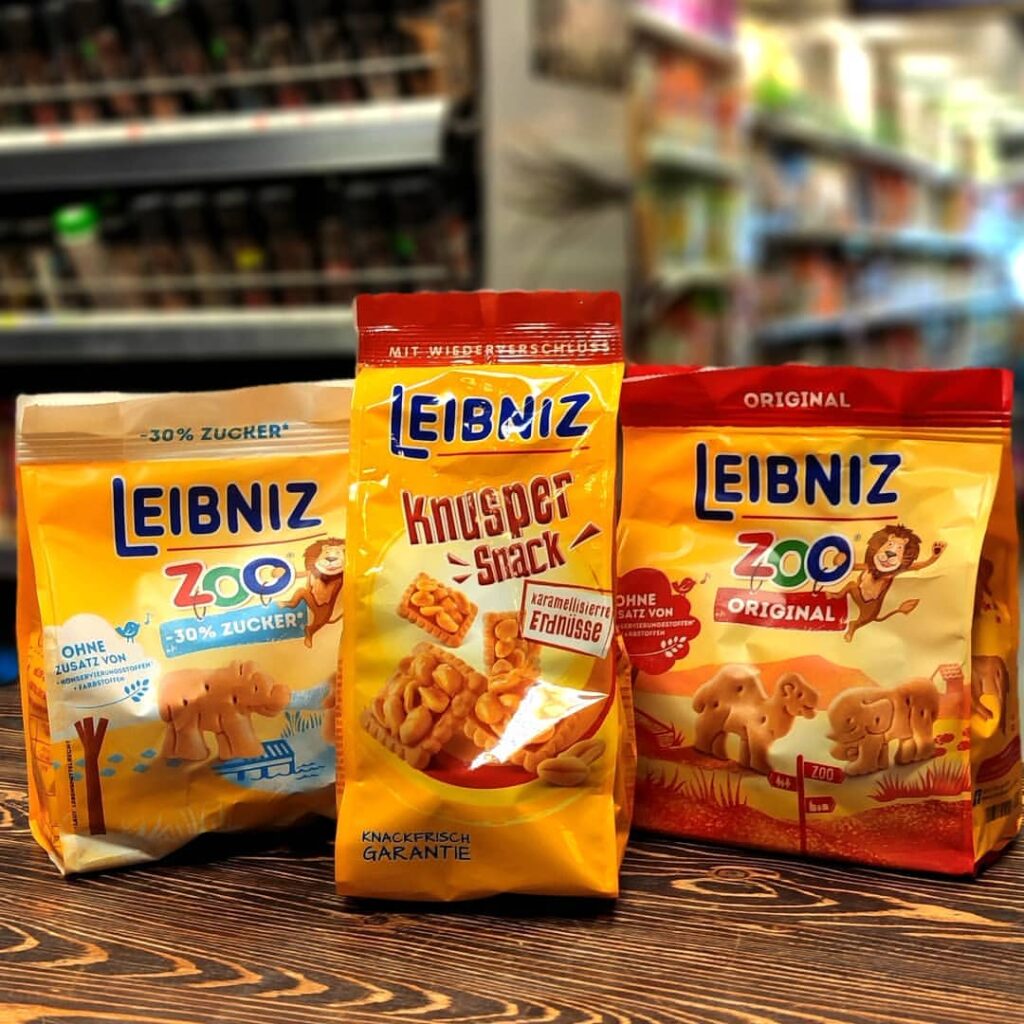
Leibniz is a German brand of biscuit or cookie, which is produced by the Bahlsen food company. It has been around since 1891. The name Leibniz comes from the philosopher and mathematician Gottfried Wilhelm Leibnitz.
There is no connection between this German candy name and Leibniz, other than that both the philosopher and the biscuit were residents of Hanover. It was very popular to name candies after famous people. Another example is a Mozartkugel.
Leibniz is a plain but rather delicious butter biscuit, with a very simple design. There are varieties of biscuits, like choco Leibniz or the Leibniz Zoo (animal shapes).
5. Toffifee
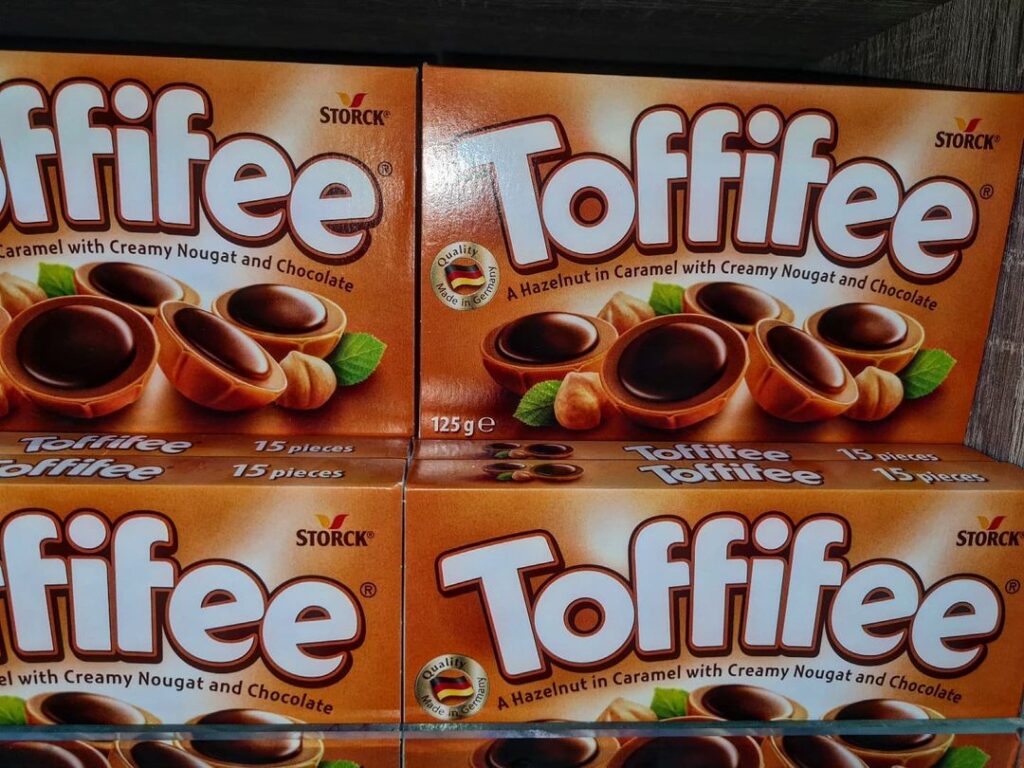
Toffifee is a little candy, with crunchy hazelnuts in delicious caramel, with nougat cream and a drop of dark chocolate on top. It was launched in 1973 in Germany and was the world’s first confectionary of its kind. Today, people enjoy this German candy in more than one hundred countries.
Initially, toffifee was intended to be a little energy snack for working women, but as the brand gained huge popularity, it was advertised as “for the whole family.”
6. Hanuta
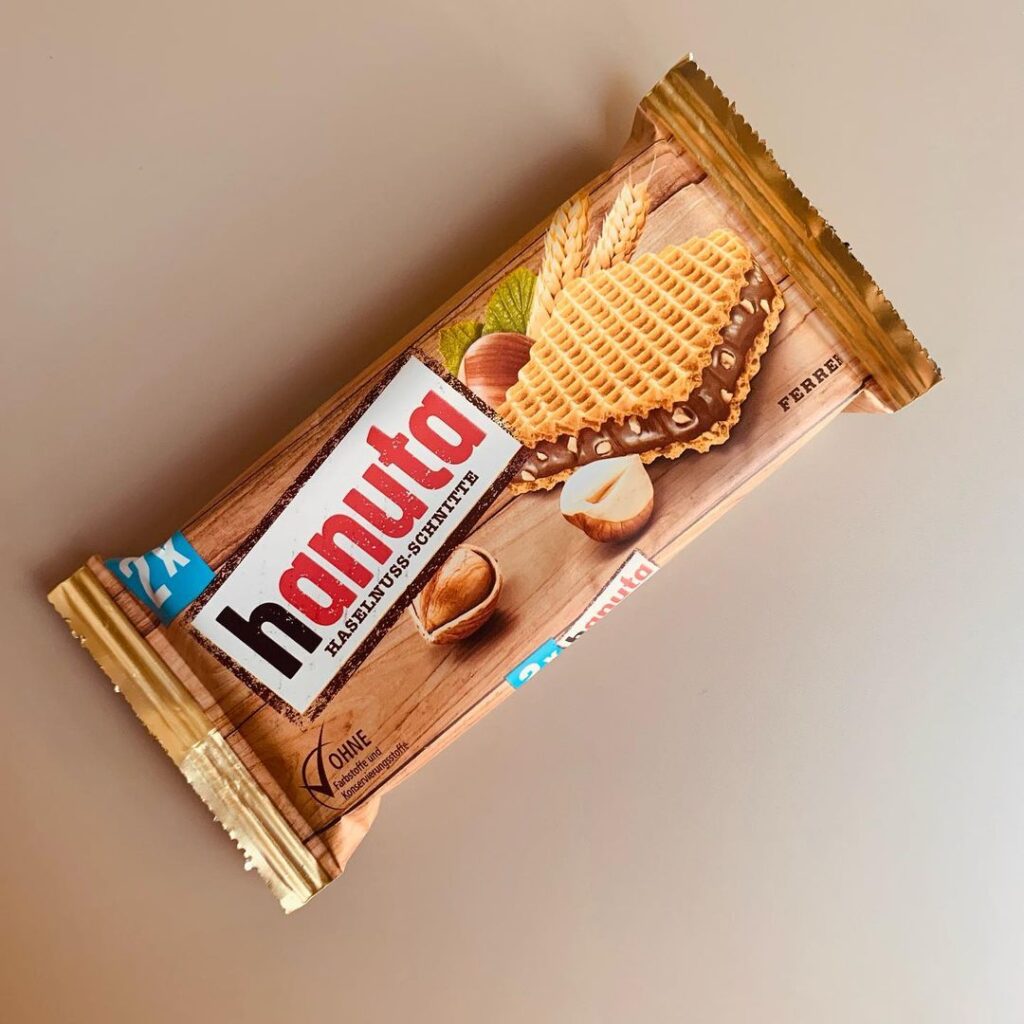
There are various German candies with hazelnuts and chocolate, and Hanuta is probably the best of them. On the outside of it are two crispy wafers, with a thick layer of chocolate between them, which has little hazelnut pieces.
Hanuta is a product of the Ferrero Company, which made its debut in Germany in 1959. The name Hanuta is an abbreviation for Haselnusstafel, which literally means Hazelnut Bar in German. Even though Ferrero is an Italian company, Haunuta is considered to be a German candy.
Hanuta wafers are individually wrapped, which makes them perfect for sharing or saving for later. Most people probably prefer to save them for later, rather than share them.
7. Trolli
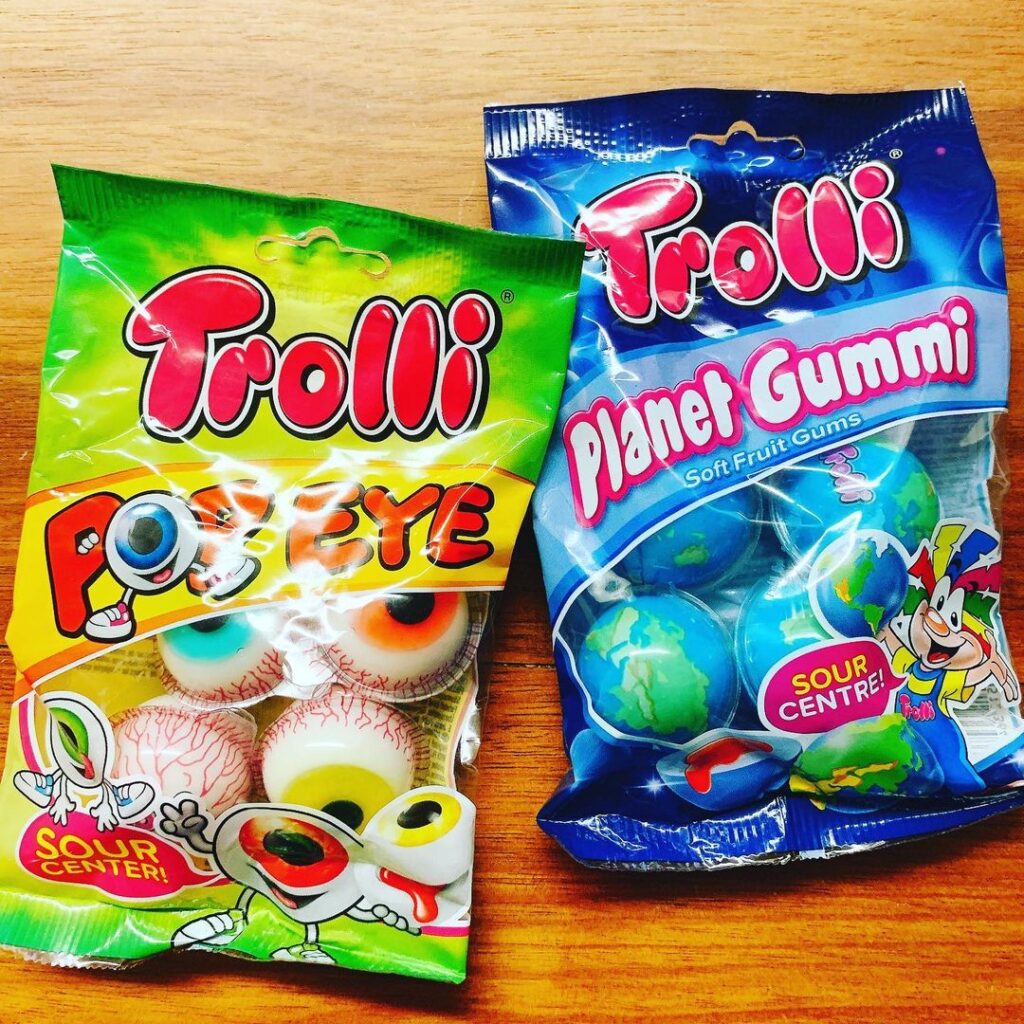
What is your favorite gummy candy? Along with Sour Patch Kids and Swedish Fish, Trolli is a big gummy brand in the United States, but it was originally founded by a German company called Mederer Corporation in 1981.
When first introduced, Trolli was innovative because it created a new shape for gummies, the Gummy Worm. Not only was the shape new, but the flavor was too because each worm featured multiple flavors in one piece. It became very popular among children.
8. Knoppers
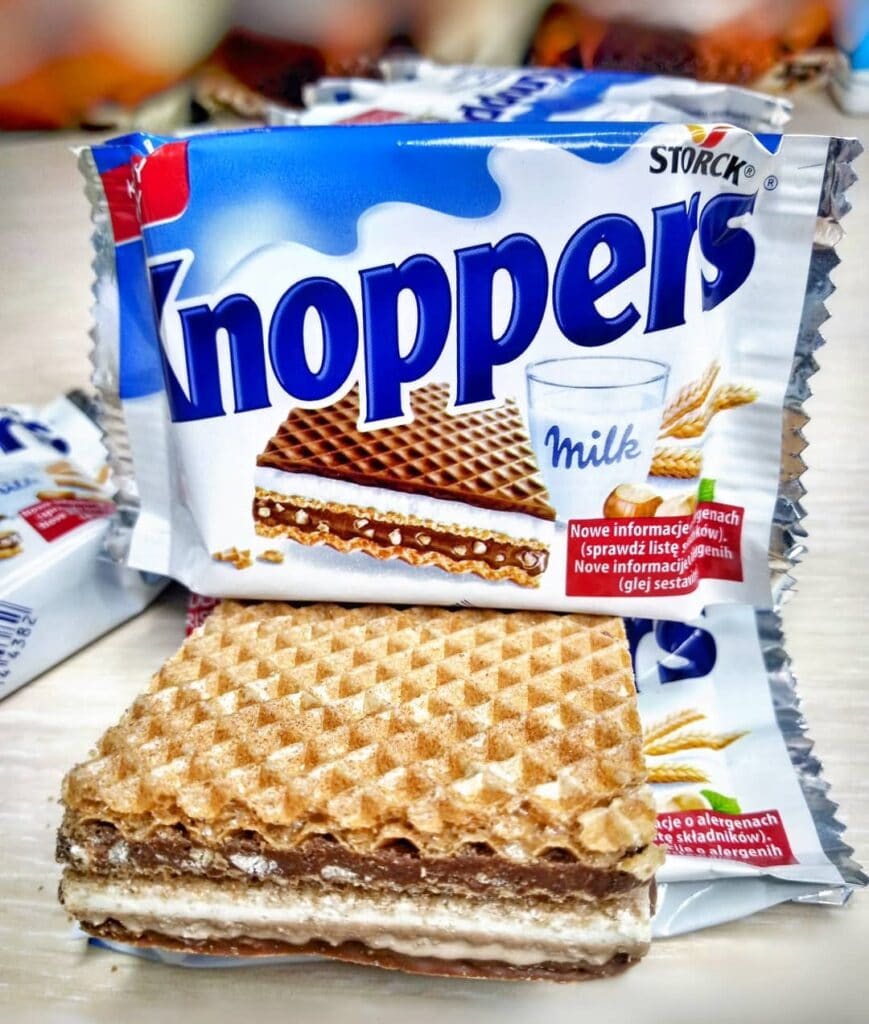
Knoppers was launched by the Storck Company in Germany in 1983. The company is also very famous for making chewy Mamba Candy. It’s been very popular in more than 50 countries, especially in Europe. They are thick, wafer candies that consist of five layers: a wafer, hazelnut cream, another wafer, milk cream, and another chocolate-covered wafer.
Knoppers has been considered a breakfast snack, and the advertisement used the slogans “Morgens halb zehn in Deutschland” (nine-thirty in the morning in Germany) and “Das Frühstückchen” (the little breakfast). And when do you usually enjoy them?
9. Riesen
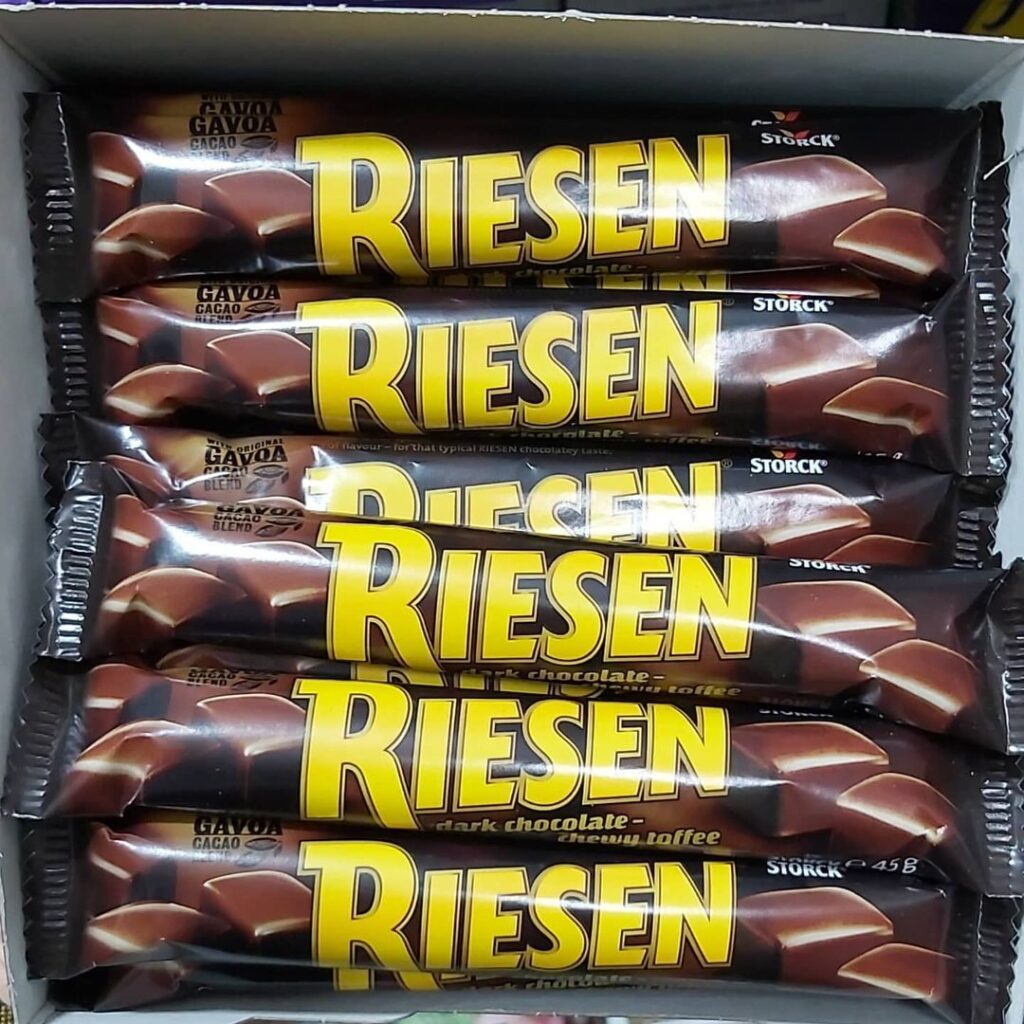
Riesen was the first German candy brand. The Storck Company introduced the first wrapper and branded caramel-chocolate chews in the 1930s. It quickly became very popular because of its rich caramel taste and particularly long-lasting chewiness.
When Riesen was introduced, candy was usually sold loose out of big jars on every corner of German streets. Riesen was the first-ever wrapped candy in Germany. Riesen quickly became established worldwide and became one of the most popular chocolate-caramel candies.
While Riesen offers a variety of flavors, the initial chocolate caramel ones are the most popular.
10. Balisto
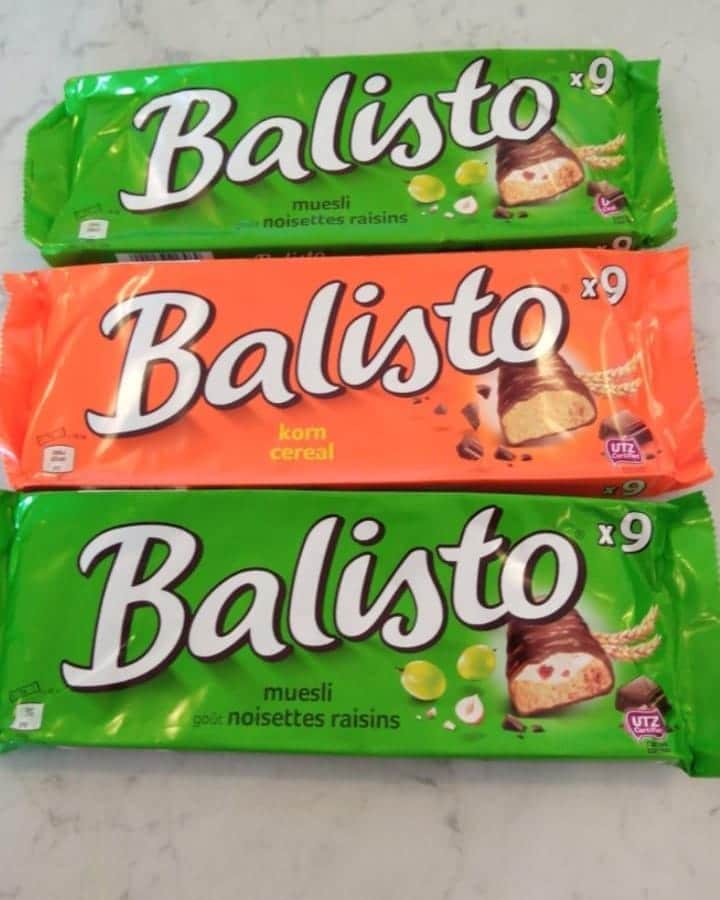
Balisto bars are the product of Mars, incorporated, which is very popular for creating candy bars like Milky Way, 3 Musketeers, Snickers, and many more. Balisto was first introduced in 1981 in West Germany.
It is a slightly different candy bar than what we usually see in supermarkets. Balisto bars consist of a digestive biscuit, with a milky cream topping, and they are usually coated in milk chocolate.
Balisto is available in a variety of flavors, and according to flavor, it offers different color wrappers, like strawberry wrapped in red, or hazelnut wrapped in blue. Not all of them are available everywhere.
Candy That Originated in Germany
The German candy industry has a great reputation worldwide. As a result, there are many types of German candy bars, chocolates, or hard candies that tend to be very popular in various countries. Along with creating Gummy Bears and Marzipan, the holiday season is unimaginable without Easter Chocolate Bunnies and Christmas Chocolate Santas. In this section, we’ll review some of the most delicious and popular candies that originate in Germany.
11. Haribo Gold Bears
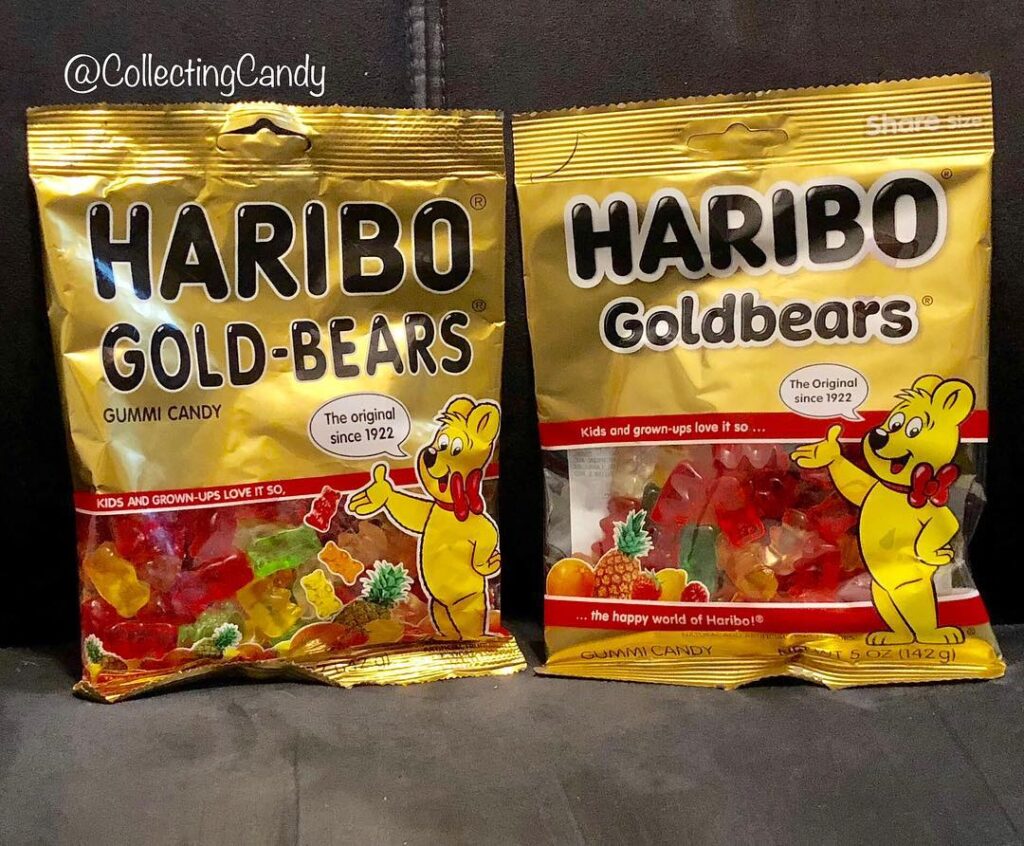
There are huge varieties of gummy candy available, like Life Savers and Jelly Beans, but Gummy Bears are the ancestors of all of them. Gummy candies were invented in the early 1920s by German entrepreneur Hans Riegel. He started his own company, Haribo, which is one of the world’s top gummy makers today.
Since Riegel was inspired by the trained bears, the first gummy candies were shaped like bears. The first ingredient he used was gum arabic, which is how this popular German candy got its name.
Today, the base ingredient for Gummy Bears is edible gelatin. The most popular flavors include raspberry, orange, strawberry, pineapple, and lemon. Which one is your favorite?
12. Marzipan (Mozartkugel)
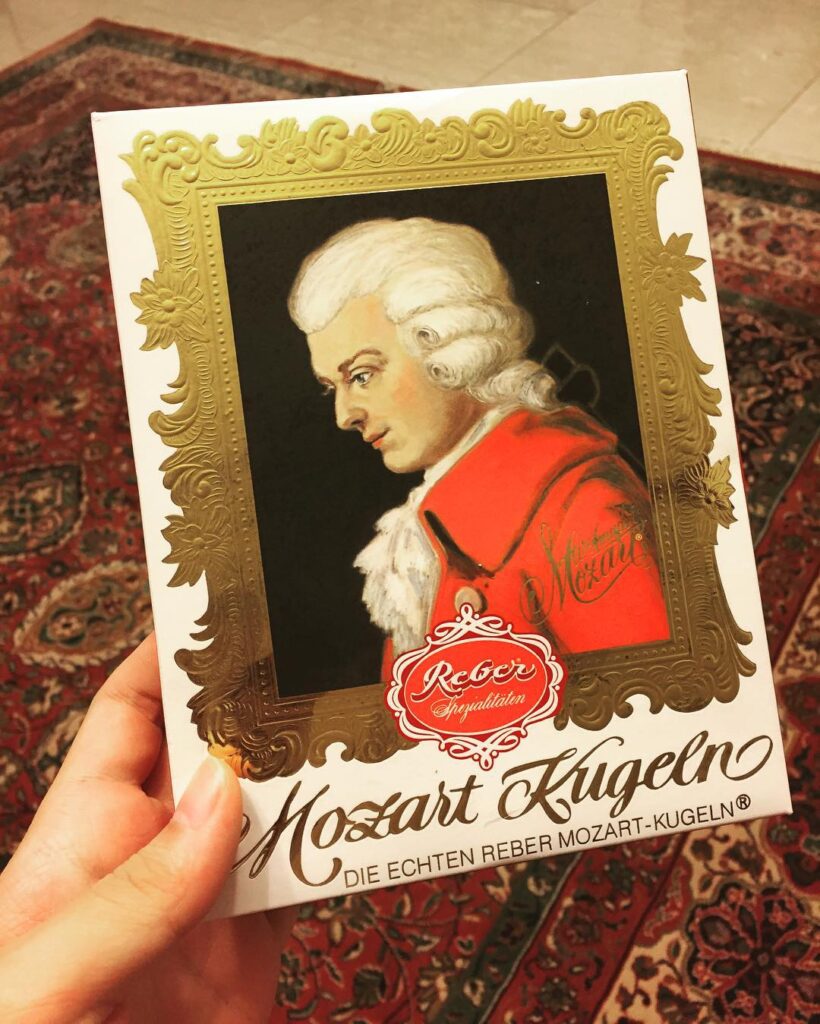
Marzipan history is connected to the German city of Lübeck. The legend says that, during the 15th-century famine, when it was hard to find flour to make bread, the senate of the city ordered bakers to come up with a solution. They used eggs, sugar, and almonds, which led to the creation of marzipan.
Even though the most popular theory suggests that marzipan came from Germany, many European cities claim marzipan to be their specialty. The term marzipan comes from marchpane, which is used in many languages and makes it harder to determine its originality. However, we have to mention that Germans even shape marzipan like actual bread, which is a popular Christmas confection.
Marzipan is used today in a variety of sweets. There’s even a German candy called Ritter Sport with a marzipan flavor. Pastry chefs use it to make marzipan fruit or marzipan cakes. However, the most popular marzipan treat is indeed Mozartkugel – small marzipan balls that consist of dark chocolate and nougat. The special thing about Mozartugel is that it features Mozart’s face on the package which is the main reason why tourists adore this German candy.
13. Lindt Chocolate Bunny
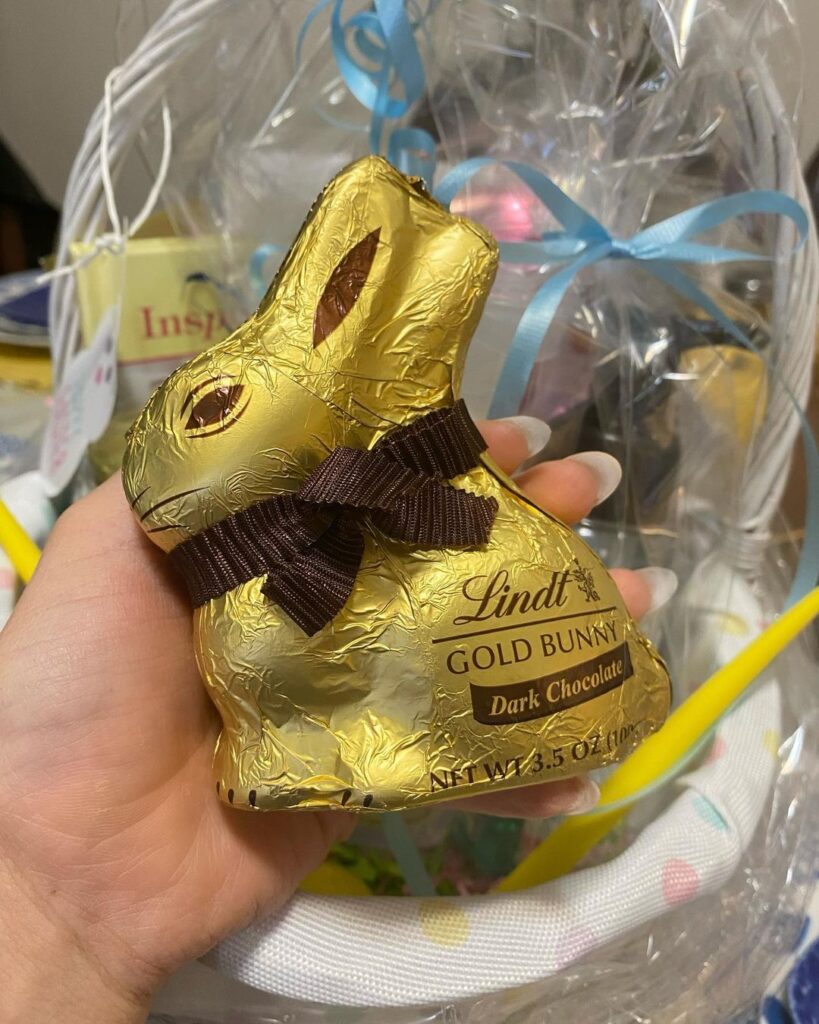
Chocolate Bunnies are an essential treat at Easter, but only a few people know that they originated from Germany. They have been created since the 19th century and were especially popular during World War II. The hollow chocolate bunnies were a by-product of the period because they had an appealing shape while using a lot less cocoa and other materials.
Chocolate Bunnies have gained significant popularity since the 20th century. Today’s Easter celebration is unimaginable without this sweet and fun German candy. It’s especially true with Lindt Chocolate Bunny. It’s a chocolate bar that has a special bunny shape – Lindt’s iconic gold bunny. This German candy is considered one of the most special gifts, particularly during the Easter season.
14. Chocolate Santa
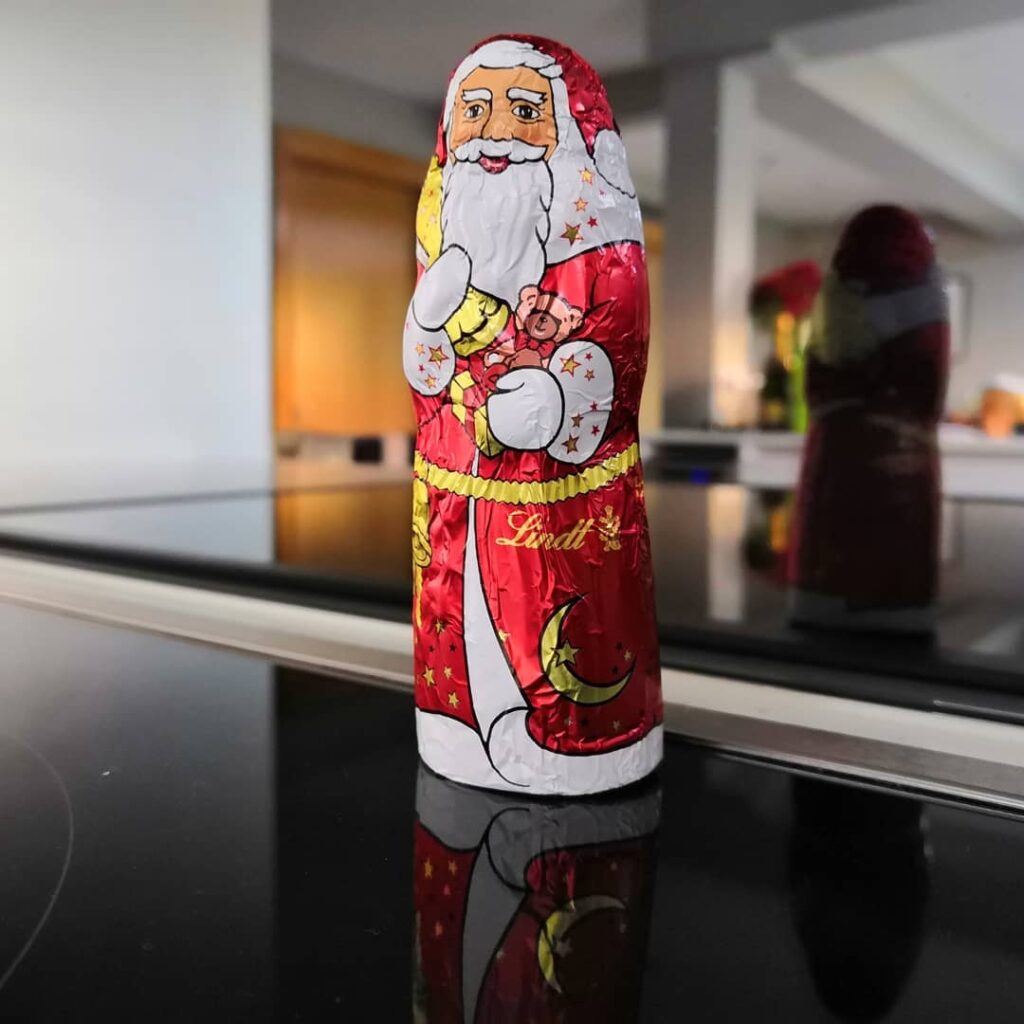
Who doesn’t like chocolate? And it’s hard to find a person who doesn’t love Santa Claus. Put them together and you get a Chocolate Santa. But have you ever thought about who came up with the idea of creating Chocolate Santas first? Most likely, Germans take credit for creating Chocolate Santas too.
Almost thirty million Chocolate Santas are sold in Germany every winter. And the most popular ones are also created by Lindt and the Sprüngli Chocolate Company. In fact, Lindt’s Chocolate Santa is a Christmas edition of the popular chocolate bunny. Considering this, German people probably can’t even imagine Christmas without chocolate and Santa. Or both at the same time.
Bottom Line On German Candy
To sum up, Germany has a long history of candy making. Using innovative techniques, offering very high-quality ingredients and fascinating flavors has made German candy one of the best in the world. There is no doubt that many European and American companies produce some valuable treats, and Germany deserves one of the top places on that list.
Who could have thought that one country would have as much impact on candy production as Germany has? Particularly on holiday candies. It is unimaginable to celebrate Christmas without Chocolate Santas or have Easter egg hunts without Chocolate Bunnies.
Besides holidays, Germany has also created one of the most beloved types of candy gummies. Who does not enjoy fruit-flavored gummy bears or sweet and sour fruit chews? We have to thank German confectioners for this invention. Children would go crazy sharing different shapes and flavors of gummy candy with each other, or just enjoy them alone. This fun and iconic German candy has truly changed the history of confectionery.
Germany has created something as valuable as marzipan. Today, cake production is unimaginable without using marzipan. If it were not for the wise German confectioners, who knows what we would have had as important as marzipan in the cake-making business?
And how about all the other delicious treats Germany has to offer? They are rich in flavor, very delicious, and made from the finest ingredients in the country. If you are looking for high-quality candy with interesting and rich flavors, then one of the German candies will absolutely have a place in your heart.
Have you already tried any of the German candy from our list? Which one is your favorite? Let us know in the comments below.

Nato is a content writer and researcher with a background in psychology. She’s passionate about writing about the candy industry and exploring the cultural significance of sweets and treats. She believes that the stories behind our favorite snacks can reveal a great deal about our values.
Please leave a review or any memories of this snack in the comments below. Thank you!
Click here for a full A-Z list of Snacks and Candy
